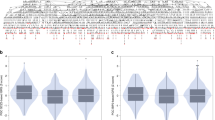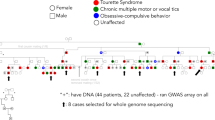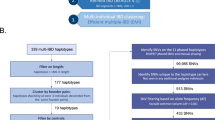Abstract
In a genome-wide linkage study, we mapped two major susceptibility loci for periodic catatonia, a phenotype with qualitative disturbances of the psychomotor sphere and a morbidity risk of 26.9 % in first-degree relatives of index cases, to chromosome 15q15, and to chromosome 22q13 using nonparametric as well as parametric (autosomal dominant model) analyses. The study included 12 multiplex pedigrees with 135 individuals, among them 57 affected persons. A second genome scan is in progress investigating four families with 21 affected individuals, aiming to confirm linkage results. Age at onset patterns as well as the clinical outcome were similar among affected individuals in both sets of families. Within the pedigrees we observed no physical diseases segregating with periodic catatonia. Under the assumption of genetic homogeneity, the statistical power to detect LOD scores ≥ 2.0 was 98.5 % in the first set of families, and 57.9 % in the second set. Thus, the panel of multiplex pedigrees segregating periodic catatonia seems to represent a homogenous clinical sample, and possesses sufficient statistical power to delineate and confirm linkage to major genetic loci for periodic catatonia.
Similar content being viewed by others
Author information
Authors and Affiliations
Rights and permissions
About this article
Cite this article
Stöber, G., Pfuhlmann, B., Nürnberg, G. et al. Towards the genetic basis of periodic catatonia: pedigree sample for genome scan I and II. European Archives of Psychiatry and Clinical Neurosciences 251 (Suppl 1), I25–I30 (2001). https://doi.org/10.1007/PL00014197
Issue Date:
DOI: https://doi.org/10.1007/PL00014197




